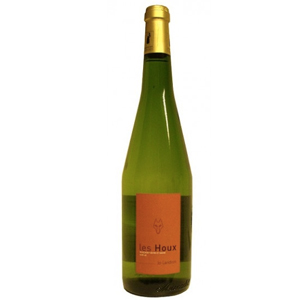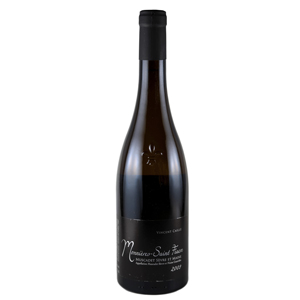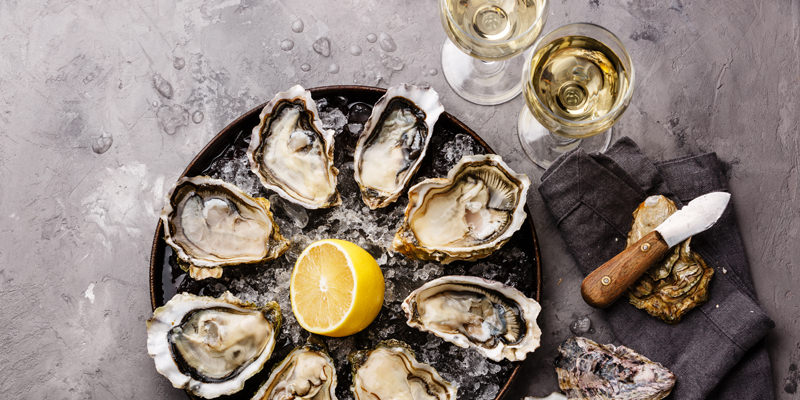If there is one French white wine that you definitely need in your repertoire, especially if you like oysters, it’s Muscadet. Sometimes, people hear “Muscadet” and think of Moscato, the sweet wine from Italy, but while the names sound a little bit the same, they couldn’t be more different.
Made from a grape called Melon de Bourgogne, Muscadet is a crisp, floral, bright and dry white wine from the westernmost part of the Loire Valley, along the Atlantic Coast of northern France. The soils of Muscadet’s vineyards are full of oyster shell deposits as well as pressurized granite, delivering a lip-smacking minerality to these wines. Also unique about Muscadet is that the wine is vinified sur lie, meaning that the juice is kept in contact with the lees, the dead yeasts and skin cells, for many months. This lends creaminess to the wine, which is in beautiful balance with the natural acidity from the cool climate.
For a long time, Muscadet was made in bulk and was fairly low in quality. But in recent decades, several producers converted to organic growing, started studying their vineyards carefully, and revolutionized their winemaking approach so that terroir is expressed in the bottle. Most of these winemakers now make single-vineyard wines, emphasizing the unique aspects of the soil. The good news is that Muscadet is still very affordable; you can find great bottles for $13 or $15, and it’s on many by-the-glass lists at restaurants that have raw bars.
If you have a good wine shop near you, seek out one of these top Muscadet producers, and serve a bottle nicely chilled the next time you shuck some mollusks or whip up a batch of linguini with clams.
Domaine de la Pèpiere Muscadet Sur Lie
 This entry-level wine from a top producer is always a classic choice and an insanely good value. Grab it when you need an easygoing but delicious wine with lots of stone fruit notes and freshness to sip alone or with any light food. Also look for the “4” cuvee, which is aged four years on the lees and is a really stunning, complex wine that’s still not expensive.
This entry-level wine from a top producer is always a classic choice and an insanely good value. Grab it when you need an easygoing but delicious wine with lots of stone fruit notes and freshness to sip alone or with any light food. Also look for the “4” cuvee, which is aged four years on the lees and is a really stunning, complex wine that’s still not expensive.
Jo Landron Muscadet Sevre-et-Maine Les Houx
 Fall in love with Muscadet by tasting wine from Jo Landron, who is obsessively knowledgable about every soil type in his vineyards and aims to let the wine express its environment. This wine is from clay and sandstone soil and sees 10 months on the lees. The nose is a little smoky and the wine has some body and structure, with ripe fruit, wonderful acidity, and a long, mineral finish. Also look for Landron’s Fief du Briel, from a special vineyard with orthogneiss (granite) soil and quartz, which gets 18 months on the lees and is definitely a wine to cellar, with flinty, mineral notes and lemon zest acidity.
Fall in love with Muscadet by tasting wine from Jo Landron, who is obsessively knowledgable about every soil type in his vineyards and aims to let the wine express its environment. This wine is from clay and sandstone soil and sees 10 months on the lees. The nose is a little smoky and the wine has some body and structure, with ripe fruit, wonderful acidity, and a long, mineral finish. Also look for Landron’s Fief du Briel, from a special vineyard with orthogneiss (granite) soil and quartz, which gets 18 months on the lees and is definitely a wine to cellar, with flinty, mineral notes and lemon zest acidity.
Vincent Caillé Monnières-St-Fiacres
 I love all of Caillé’s wines but this bottling, coming from two vineyards that share the same gneiss (granite) soil, is really my favorite. It sees a full four years on the lees (so the current vintage is 2010), and is tart, light, fresh, and saline. It might even be worth decanting this wine to let it breathe — that’s how serious it is!
I love all of Caillé’s wines but this bottling, coming from two vineyards that share the same gneiss (granite) soil, is really my favorite. It sees a full four years on the lees (so the current vintage is 2010), and is tart, light, fresh, and saline. It might even be worth decanting this wine to let it breathe — that’s how serious it is!
Domaine de L’Ecu Expression de Gneiss
 Frederic Niger bottles his wine according to the three soil types of the Muscadet region: gneiss and orthogneiss, which are different ages of granite with different pressure levels (gneiss is older, more pressurized), and then just granite, which sometimes has quartz mixed in. All the Domaine de l’Ecu wines are fascinating, so just try any one that you can find. Besides the Melon de Bourgogne bottles, Niger is working with amphorae, an ancient method of winemaking that produces very interesting juice.
Frederic Niger bottles his wine according to the three soil types of the Muscadet region: gneiss and orthogneiss, which are different ages of granite with different pressure levels (gneiss is older, more pressurized), and then just granite, which sometimes has quartz mixed in. All the Domaine de l’Ecu wines are fascinating, so just try any one that you can find. Besides the Melon de Bourgogne bottles, Niger is working with amphorae, an ancient method of winemaking that produces very interesting juice.

